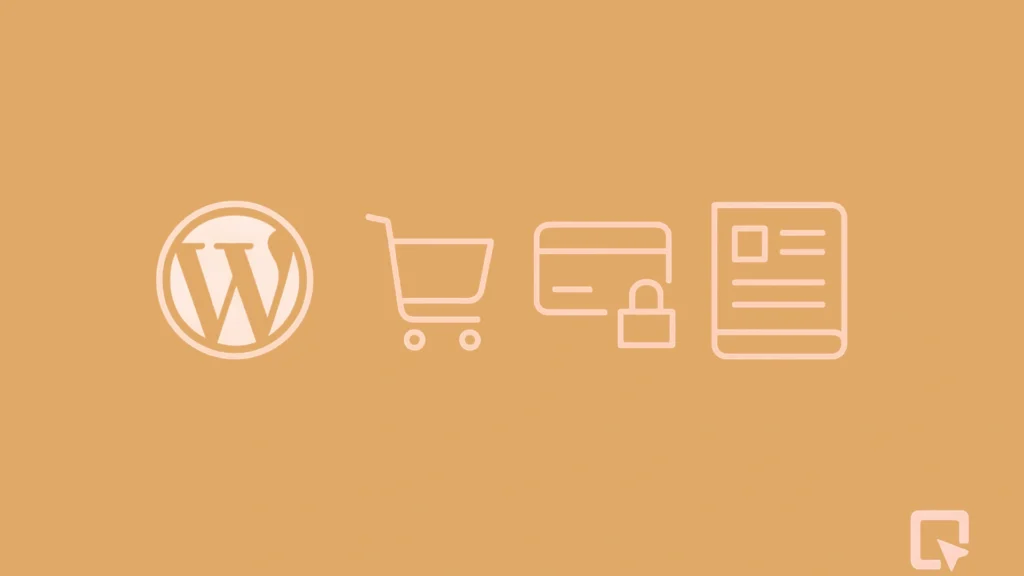So, you’re ready to build an online store. You’ve likely heard about Shopify, BigCommerce, and maybe even Wix.
But what about WordPress? If you’re wondering if this giant of the web can truly be your platform to build an ecommerce website with WordPress, you’ve come to the right place. Ultimately, this guide will walk you through everything from why WordPress is a fantastic choice to the exact steps, costs, and tools you need to succeed.
Let’s dive in and unlock the power of the world’s most flexible platform for your online business.
Is WordPress Good for Ecommerce?
Before we get into the “how,” let’s tackle the “why.” You might be asking, “Is WordPress good for ecommerce?” The short answer is a resounding yes, but with one key condition: it’s powerful when you use the right tools, like the WooCommerce plugin.
The numbers speak for themselves WordPress powers 43.4% of all websites globally, making it by far the most popular content management system in the world. When combined with WooCommerce for ecommerce functionality, this creates a formidable foundation for online stores.
Think of it this way: WordPress itself is the engine of a car. It’s incredibly powerful and can be modified for any purpose. To turn it into an ecommerce powerhouse, you add WooCommerce, which is like adding a custom cargo bed and a payment terminal to that car, thereby transforming it into a full-fledged delivery vehicle.As a result, this combination creates a platform that is perfectly suited to build an ecommerce website with WordPress that is both robust and adaptable.
The Powerful Advantages:
- Total Freedom and Ownership: Unlike closed platforms, you own your website. Therefore, you’re not locked into monthly fees beyond hosting and can move your site wherever you want.
- Unbeatable SEO Capabilities: WordPress is built for content. Consequently, this makes it easier to rank on Google and thereby attract free organic traffic to your store.
- Limitless Customization: With thousands of themes and plugins, you can build any type of store imaginable, from selling physical products to memberships and bookings.
- It’s Cost-Effective: While there are costs, building a WordPress ecommerce website can be more affordable in the long run than high-tier plans on other platforms.
How to Build an Ecommerce Website with WordPress in 6 Steps
Alright, let’s get practical. How to build an ecommerce website with WordPress might seem complex, but it’s a straightforward process when broken down. This is where the WordPress ecommerce website builder magic truly happens, step by step.
Step 1: Choose Your Domain and Hosting

First, you need a home for your store. Specifically, your domain name is your address (e.g., yourstore.com), and hosting is the land it’s built on. To build an ecommerce website with WordPress, we highly recommend managed WordPress hosting.
For instance, providers like SiteGround or WP Engine handle technical stuff like speed and security, thereby making your life much easier. In essence, this is the foundation of your entire store.
If you’re still exploring other platforms before fully committing, you can also check out our Wix eCommerce Review to see how it compares to WordPress in terms of ease of use and flexibility.
Step 2: Install WordPress and WooCommerce

Next, it’s time to build the structure. Most importantly, most hosting providers let you install WordPress with just one click. After that, you go to your new website’s dashboard, search for “WooCommerce,” and install the free plugin. Following that, the setup wizard will guide you through adding currency, payment methods, and shipping info—effectively turning your site into a full ecommerce website builder.
Step 3: Pick and Customize Your Theme
Now, let’s make it look good. In other words, your theme controls your store’s design. Hence, choose a fast, responsive theme that’s built for WooCommerce, such as Astra or OceanWP. These themes ensure your products look great on any device, which is crucial for sales.
Step 4: Add Your Products
This is the fun part! In your WordPress dashboard, you’ll find a new “Products” tab. Then, click “Add New” to input your product names, descriptions, prices, and high-quality images. Additionally, you can organize them into categories and tags to help customers find what they need.
Step 5: Set Up Payments, Shipping, and Taxes
Clearly, no store can run without these essentials. Under WooCommerce settings, you can:
- Payments: Enable secure gateways like PayPal and Stripe so that you can accept credit cards.
- Shipping: Set up shipping zones and rates, for example, free shipping for orders over $50.
- Taxes: Configure tax rules or use WooCommerce’s automated tax calculation.
Step 6: Test and Launch Your Store!
You’re almost there! Before you go live, be sure to place a test order to ensure the checkout process works smoothly. Also, double-check your contact page, privacy policy, and website speed. Then, congratulations! Your WordPress ecommerce website is open for business.
What is the Real WordPress Ecommerce Website Cost?
Let’s talk numbers. Understanding the WordPress ecommerce website cost is key to planning your budget. The great news is that you can start without a huge investment. Here’s a realistic breakdown:
| Component | Cost Estimate | Details |
| Domain Name | ~$15 / year | Your store’s custom address (e.g., .com). |
| Web Hosting | ~$25 – $50 / month | The recommended managed hosting for best performance. |
| SSL Certificate | FREE | Essential for security; included with good hosting. |
| WooCommerce | FREE | The core plugin that makes your store work. |
| Theme | $0 – $100 | Free themes work, but premium offers more features. |
| Plugins | $0 – $200 / year | For extra functionality like subscriptions or email marketing. |
| Total (First Year) | ~$350 – $800 | Often cheaper than all-in-one platforms long-term. |
Must-Have Best WordPress Ecommerce Plugins
The right tools can supercharge your store. While WooCommerce is the engine, these best WordPress ecommerce plugins add specialized features. Think of them as the accessories for your WordPress ecommerce website builder toolkit. With WooCommerce holding a market share of 39% among global ecommerce platforms, it’s clear that millions of successful stores rely on this ecosystem.
- Yoast SEO or Rank Math SEO: Essential for optimizing your product pages and content to rank higher in Google search results.
- Wordfence Security: Protects your store and customer data from malware and hacking attempts.
- Elementor Pro: A drag-and-drop page builder that lets you design beautiful product pages and layouts without any coding.
- Monster Insights: Connect your store to Google Analytics, so you can see what visitors are doing and figure out how to increase sales.
Conclusion
In conclusion, choosing a wordpress ecommerce website builder is choosing freedom, scalability, and control. While it requires a bit more hands-on setup than all-in-one solutions, the payoff is a store that you completely own and can mold to your exact vision.
By following this guide, you’re well on your way to creating a successful WordPress ecommerce website that can grow with your business. What are you waiting for? Your entrepreneurial journey starts now.
Frequently Asked Questions
While WooCommerce is the most popular and powerful option, other plugins like Easy Digital Downloads (for digital products) exist. However, for most stores, WooCommerce is the best choice.
Not at all! Modern tools like page builders (Elementor) and managed hosting have made it possible for anyone to build a professional WordPress ecommerce website without touching a line of code.
WordPress offers more freedom, better SEO tools, and often lower long-term costs. On the other hand, Shopify is easier to set up initially but can be more expensive and less flexible as you grow.
Yes, absolutely. By using a reputable managed hosting provider, keeping your themes and plugins updated, and using a security plugin, you can create a very secure online store.

